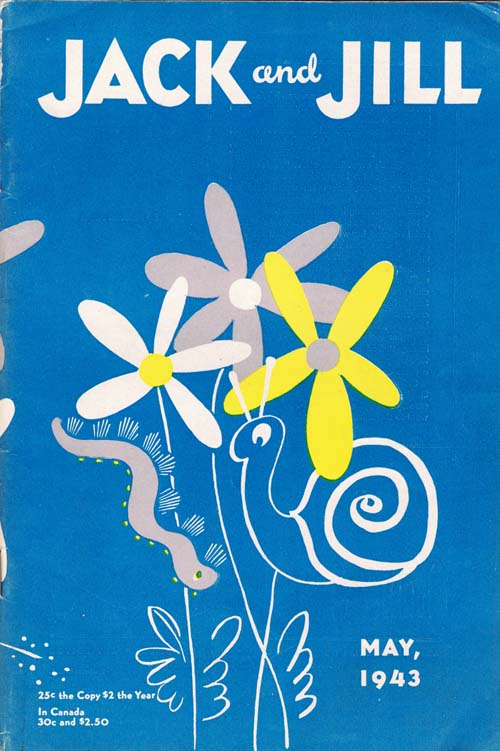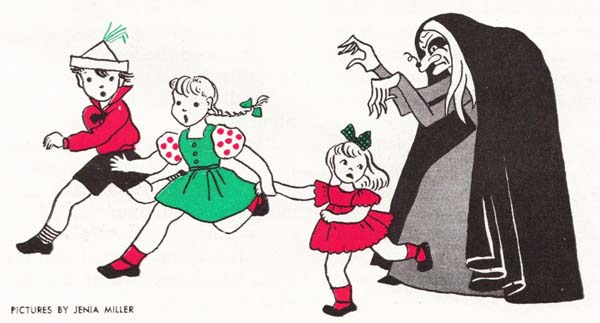 Jack and Jill Magazine, May 1943: “Baba Yagah and the Children,” by Jenia Miller and Maria Van Vrooman, and with illustrations by Miller.
Jack and Jill Magazine, May 1943: “Baba Yagah and the Children,” by Jenia Miller and Maria Van Vrooman, and with illustrations by Miller.
Jack and Jill Magazine has been running Baba Yaga stories since the early 1940s. I’m a massive nerd for Baba Yaga– if that isn’t already evident– and so I’ve begun an effort to try and collect all of the issues featuring Baba Yaga stories.

It’s a lot of fun. They’re hard to find, but they’re relatively inexpensive. The fun of the research and the chase is deeply satisfying, and it doesn’t really cost me an arm and a leg when I come across an issue I don’t have. I’d be lying if I didn’t say that I was a little worried that starting a series of blog posts about it wouldn’t make them harder to find, though.
Jenia Miller wrote many of the early Baba Yaga stories. This is the only one I’ve found that lists Maria Van Vrooman as a co-author. This is also the very first Baba Yaga story ever published in Jack and Jill, as far as my research can determine.

It’s an interesting story, as many of them were. It injects lots of interesting touches that I haven’t been able to find analogues for in the actual myths and legends of Baba Yaga, including the idea that she carried a lightning bolt around in her cloak, which made her look like a hunchback. It also introduces Baba Yaga’s cat, named “Stenka” in these early stories. Stenka, it seems important to note, has an eyepatch and a peg-leg. In later stories, the cat loses its name, the eyepatch, and the pegleg, which is somewhat disappointing.
Also for some reason, the early Jack and Jill stories called the main character “Baba Yagah” until at least 1949, when the author of the stories changed to Nancy K. Ford.
This story itself is an odd one– it presents Baba Yaga as a misunderstood kindly old witch, who flies around with her mortar and pestle, watching children play and longing to play their games. When she flies down to join them, they are horrified and run away.

Baba Yaga is very sad about this, so she intentionally terrifies the children. You know, like you do. Because of this, her woodland creature friends don’t want to hang out with her anymore, and instead they find Vania, a small boy who lives in the woods.
So Baba Yaga finds Vania and tries to murder him with her thunderbolt. It doesn’t work, and she gets sick without the lightning bolt keeping her warm. Vania tucks her into his bed and takes care of her, at which point she bursts into tears. Vania plays with her, fulfilling her desire to play with the children.

Baba Yaga winds up acting as a sort of Santa Claus, sneaking into the homes of the children and leaving them little treats.
It’s extremely bizarre:

Vania hasn’t shown up in any of the other stories yet.
Maybe she ate him when he became disagreeable.
This story was reprinted in the January 2014 issue of Jack and Jill, significantly condensed and watered down, and with two new illustrations by artist Chuck Gonzales. Here’s one of those illustrations:

Anyway, I’ve got a bunch of these things, and I’ll slowly be working my way through them. Finding a complete list of Baba Yaga stories in Jack and Jill has proven to be extremely difficult, so the work will be ongoing for a while, I suspect.






